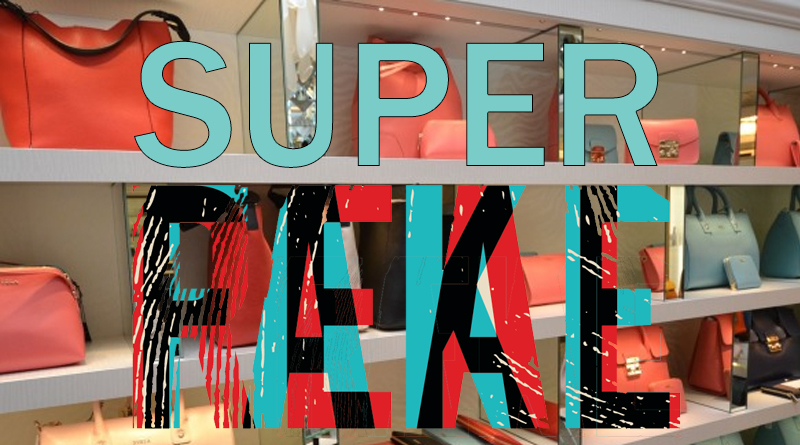The Superfake Surge: How Near-Perfect Counterfeits Are Shaking the Luxury World
Near-perfect "superfakes" threaten luxury brands by eroding exclusivity and consumer trust, fueled by sophisticated counterfeiting, e-commerce platforms, and shifting attitudes like "dupe culture".

A Hermès Birkin bag, meticulously crafted and retailing for tens of thousands, now has a sinister twin. Not a cheap knockoff hawked on street corners, but a "superfake" – a near-identical replica produced in clandestine workshops with premium materials, sometimes selling for over $9,000. This alarming evolution in counterfeiting, fueled by soaring luxury prices and turbocharged by e-commerce platforms like Temu and Shein, is forcing a reckoning within the $300 billion luxury industry. The average price of iconic luxury products in France surged by a staggering 54% between 2019 and 2024, creating fertile ground for illicit manufacturers to invest in sophisticated techniques and target consumers willing to pay premium prices for deception Source.
Gone are the days of easily spotted fakes. Today’s superfakes are produced in small operations with surprising access to high-quality materials and craftsmanship, making them "nearly indistinguishable from authentic pieces, even for experts" Source. Brands like Cartier and Van Cleef & Arpels, owned by luxury conglomerate Richemont, are witnessing their most exclusive jewelry designs meticulously copied. These aren't just inspired homages; they are direct competitors, deliberately crafted to deceive buyers into believing they own the genuine article, directly eroding the exclusivity and prestige painstakingly built over decades. Richemont’s recent lawsuit against Malidani Jewelry Corp. underscores this escalating threat, seeking not only injunctions but up to $2 million per counterfeit mark and disclosure of the shadowy manufacturing networks behind these fakes Source.
The digital marketplace has become the superhighway for distributing these counterfeits. Major Chinese e-commerce platforms specializing in ultra-cheap goods shipped in small parcels face intense scrutiny. EU Justice Commissioner Michael McGrath is explicitly targeting Temu and Shein, stating that "most unsafe and illegal products" entering the EU arrive via these channels, posing significant consumer risks Source. Brands are fighting back in court. Brandy Melville’s lawsuit against Temu is a stark example, accusing the platform of building its entire business model around selling counterfeits while cynically presenting itself as a neutral marketplace. The brand alleges Temu exercises near-total control over sellers and actively promotes infringing goods mimicking its iconic styles Source. The outcome could redefine platform liability.
Compounding the problem is a seismic shift in consumer attitudes, heavily influenced by social media. The rise of "dupe culture," enthusiastically promoted by influencers, has legitimized the search for cheaper alternatives. While distinct from deliberate counterfeits (fakes), dupes signal a broader consumer prioritization of aesthetic similarity and affordability over traditional brand authenticity and exclusivity Source. This normalization, coupled with genuine luxury price hikes and occasional brand scandals – like Loro Piana facing court supervision over alleged poor working practices – makes consumers question the value proposition of authenticity. The result? Counterfeits are increasingly viewed by some as a savvy, rather than shameful, choice Source.
The consequences extend far beyond lost sales. The counterfeit trade is intrinsically linked to organized crime and the exploitation of vulnerable workers Source. Furthermore, the pervasive presence of superfakes and the normalization of dupes erode the very foundation of luxury: consumer trust in authenticity and craftsmanship. As the line blurs, luxury giants recognize that combating this threat requires more than lawsuits. Hermès understands that impeccable supply chain integrity is now a crucial weapon Source. Brands must demonstrably prove their value proposition – ensuring provenance, ethical production, and tangible quality that justifies the premium – while navigating the delicate balance of protecting intellectual property without alienating value-conscious consumers drawn to the aesthetic allure of their designs.
The battle against the superfake is a multi-front war. It demands aggressive legal action against sophisticated counterfeiters and complicit platforms, enhanced supply chain transparency, regulatory crackdowns on e-commerce loopholes, and a fundamental effort to rebuild consumer faith in the intrinsic value of the real thing. The luxury industry’s heritage and future depend on winning it.